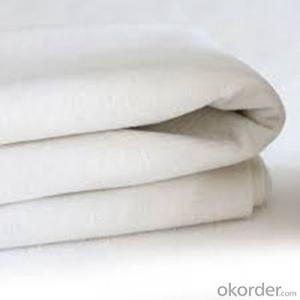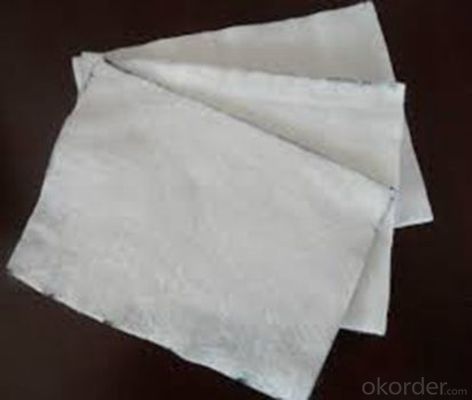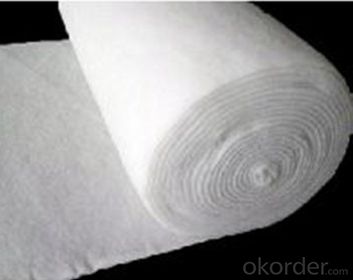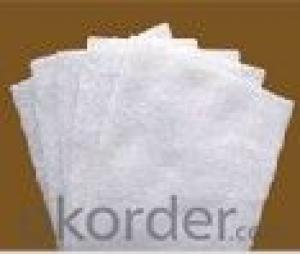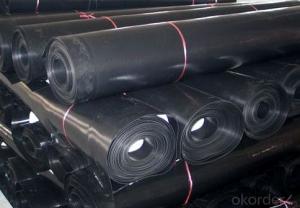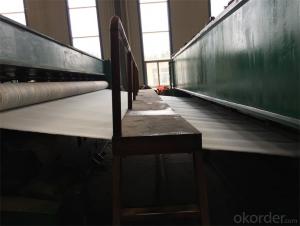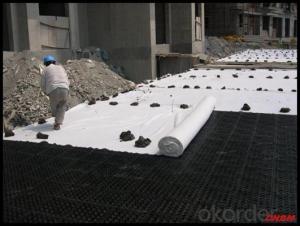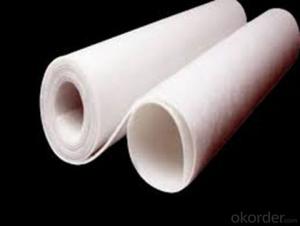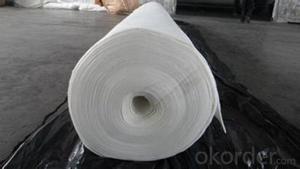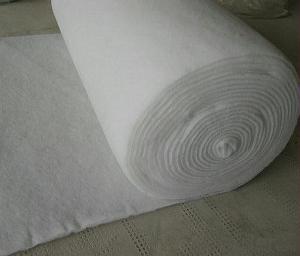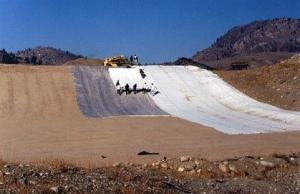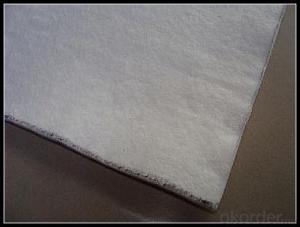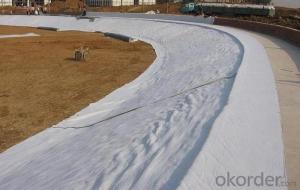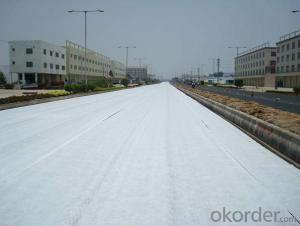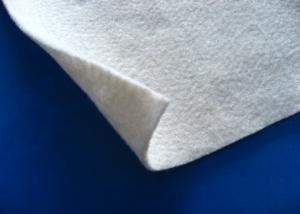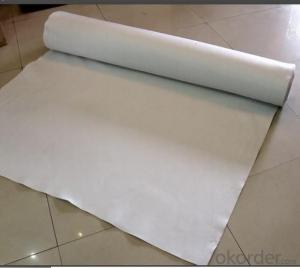Géotextile 2m Isolation Filament Polypropylene Geotextile Fabric for Road
- Loading Port:
- China main port
- Payment Terms:
- TT OR LC
- Min Order Qty:
- 1000 m²
- Supply Capability:
- 10000000 m²/month
OKorder Service Pledge
OKorder Financial Service
You Might Also Like
Specification
Applications:
1) Filtration :
The filtration layer of the dykes, river canal, seacoast, concrete slope, retaining walls. At the same time of preventing the clay granule from passing, it allows the water and the gas pass through freely.
2) Separation :
The isolation of the railway dregs and the roadbed, roadbed and the soft base, surface of the airdrome and parking lot and the groundsill, different dam materials. It isolates the soil and the gravel of two kinds different granule pathway from the groundsill or other buildings.
3) Adding muscle :
The highway, railway, soil-stone dam, breakwater, airport, backfill soil of retaining wall, slope protection, etc in which distributes the earth stress, prevents the side-displacement of the earth body and improves the earth body stability.
4) Protection :
It prevents the bank from being washed out, protects the bank and the bottom, prevents the water and soil from being washed away.
Packing and shipping:
♦ Packing:in plastic film bag(keep away from moisture) and PP bag or as your customize.
♦ Shipping:By sea or as your customize
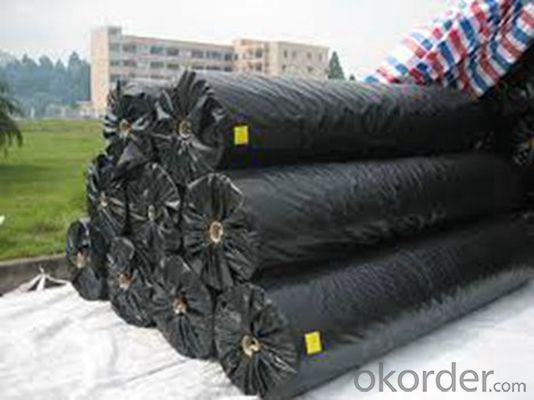
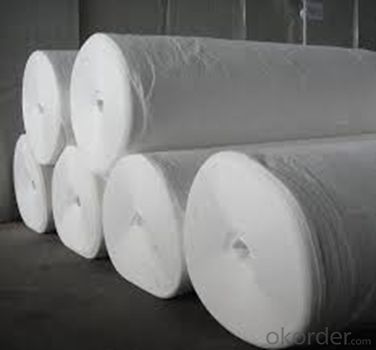
Our Service
Quality assurance
1.On a regular basis or as per your request,we entrust national testing agencies to conduct quality inspections
2. Strictly in accordance with the ISO9001-2008 international quality system standard,we monitor and manage the whole process throughout production,quality testing,and measurement to ensure product quality
3. For quality-related construction delay or substandard construction(except for damage or losses due to customer’s responsibility or irresistible natural disasters),we have refunding,replacement,and repair services.We will respond to customers’ feedbacks on quality issues within 24 hours.
Q: What kind of payments does jenor support?
A: T/T, L/C, Cash are accepted.
Q: Do you charge for the samples?
A: Accordeing to our company policy, the samples are free, we only charge the freight fee. And we will return the freight fee during the next order.
Q: Can you produce according to customers' design?
A: Sure, we are professional manufacturer, OEM and ODM are both welcome.
Q: Do you have other products?
A: Yes, please check the pictures:
Packaging & Shipping
Packing: PLASTIC FILM INSIDE, AND WOVEN BAG OUTSIDE
Shipping: About 15 days after receipt the deposit
pecifications
geotextile fabric
permeability,filtration,easy for construction
ISO and CE certificate
Good quality and competitive price
- Q: What are the different geotextile installation techniques for landfill applications?
- There are several geotextile installation techniques commonly used for landfill applications. These include the direct burial method, where the geotextile is placed directly on the landfill surface and covered with soil or other materials; the geocomposite method, which involves placing a geotextile and a geomembrane together to create a composite liner; the anchor trench method, where the geotextile is anchored in a trench around the perimeter of the landfill; and the slope method, which involves installing the geotextile on the slope of the landfill to prevent erosion. Each technique has its advantages and is chosen based on the specific requirements and conditions of the landfill site.
- Q: Can geotextiles be used for reinforcement in embankment construction?
- Yes, geotextiles can be used for reinforcement in embankment construction. Geotextiles are often used as a cost-effective solution to enhance the stability, strength, and durability of embankments. They can provide soil confinement, prevent erosion, and improve the overall performance of the embankment by distributing loads and reducing settlement.
- Q: Can geotextiles be used in the construction of landfills?
- Yes, geotextiles can be used in the construction of landfills. Geotextiles are often used as a barrier or liner material in landfills to help prevent the migration of contaminants and control the flow of leachate. They are commonly used to enhance the stability, durability, and environmental performance of landfill systems.
- Q: Geotextile universal testing machine with 20kn enough?
- Enough, we use is 20kn
- Q: Are geotextiles resistant to alkali degradation?
- Yes, geotextiles are generally resistant to alkali degradation. They are designed to withstand various environmental conditions, including exposure to alkali substances. This resistance ensures their durability and effectiveness in applications where alkali degradation may occur.
- Q: What is the latest price of geotextile?
- Per ton of national standard short geotextile 7000-8000 yuan, filament geotextile per ton - yuan.
- Q: Can geotextiles be trampled on the ground?
- Trampled on a long time to step on the geotextile will have an impact, geotextile main function is anti-penetration
- Q: What are the environmental benefits of using geotextiles?
- Geotextiles offer several environmental benefits, including erosion control, stormwater management, and soil stabilization. They prevent soil erosion by providing a physical barrier that holds soil particles in place, reducing sedimentation in water bodies and preserving the quality of aquatic ecosystems. Geotextiles also help manage stormwater runoff by promoting infiltration and reducing surface runoff, which helps to recharge groundwater and minimize the risk of flooding. Additionally, geotextiles aid in stabilizing soil, preventing slope failures, and minimizing the need for excessive excavation or grading, thereby reducing the environmental impact of construction activities.
- Q: Do you have to have a mattress on the geotextile?
- 1, geotextile must be washed back to fill or sand protective layer and light compaction to prevent the subsequent construction of the destruction of geotextile, punctured and so on. But also a transition zone, to ease the upper load on the geotextile extrusion, tensile force and so on. 2, "Geotextile Construction Code QB / SNGSG-2004" and "Geosynthetics Application Technical Specifications GB / T-2017" backfill requirements: 1) timely backfill materials, backfill stone maximum drop of not more than 300mm, Heavy earth stones should not roll on the slope of the rolling; 2) fill the compaction should meet the design requirements, backfill 300mm loose layer, light compaction. 3, geotextile introduction: 1), geotextile by synthetic fiber through acupuncture or weaving made of permeable geosynthetics. Finished cloth for the cloth, the general width of 4-6 meters, the length of 50-100 meters. Geotextile is divided into a woven geotextile and non-woven geotextile. Advantages: geotextile with excellent filtration, drainage, isolation, reinforcement, anti-seepage, protection, with a light weight, high tensile strength, good permeability, high temperature, resistance to Freezing, anti-aging, corrosion-resistant advantages. 2), Disadvantages: in the rigid base waterproof requirements are not applicable (tensile rate does not meet the requirements), easy to break, scratches and so on.
- Q: How do geotextiles help in separating different soil layers?
- Geotextiles help in separating different soil layers by acting as a barrier that prevents the mixing of soils. They are placed between different soil layers to create a division, allowing each layer to maintain its unique characteristics and properties. This separation prevents soil erosion, maintains stability, and enhances the overall performance of the soil structure.
Send your message to us
Géotextile 2m Isolation Filament Polypropylene Geotextile Fabric for Road
- Loading Port:
- China main port
- Payment Terms:
- TT OR LC
- Min Order Qty:
- 1000 m²
- Supply Capability:
- 10000000 m²/month
OKorder Service Pledge
OKorder Financial Service
Similar products
Hot products
Hot Searches
Related keywords
